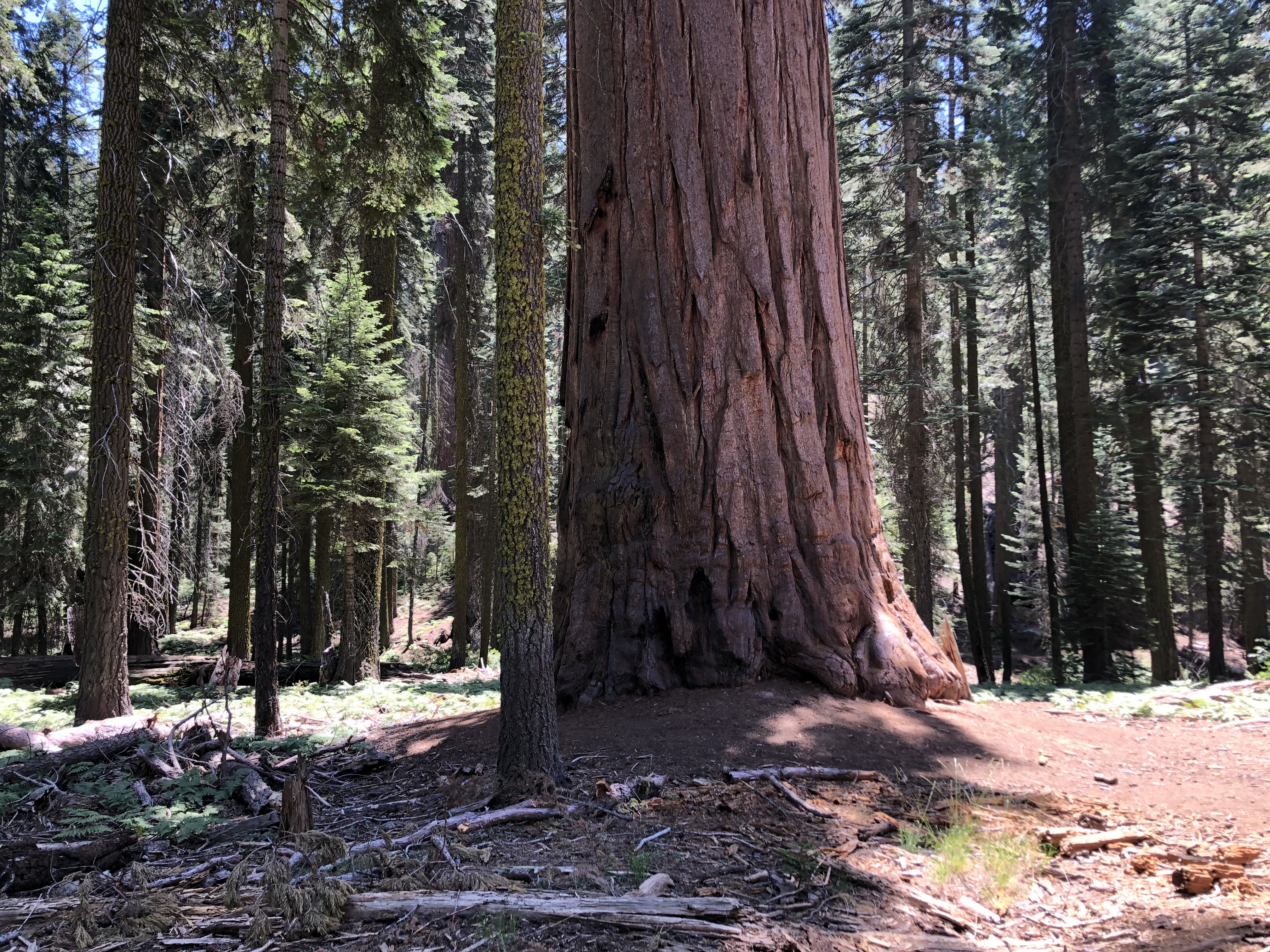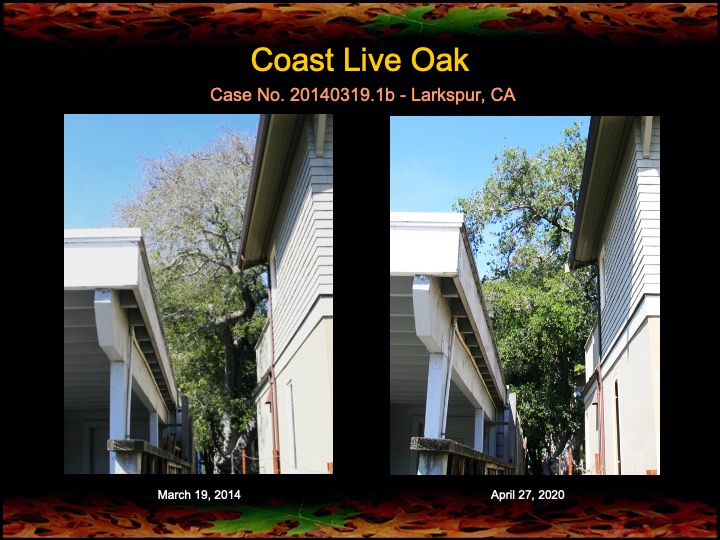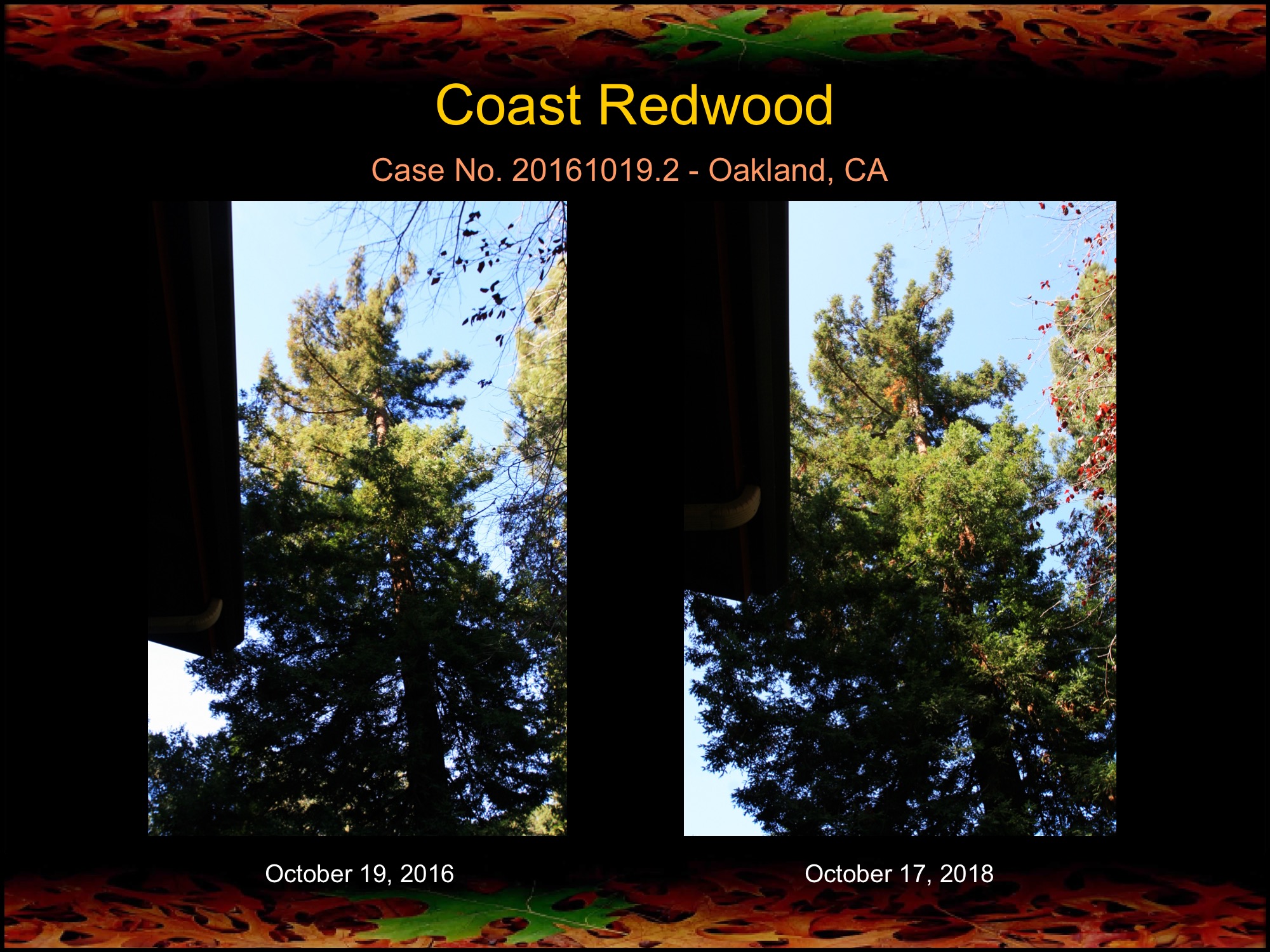
Yesterday I checked on several coast live oaks, ponderosa pines, a coast redwood, and a southern magnolia in Palo Alto, CA that I’ve treated with fire mimicry in recent years. The work began at one site about 14 years ago and at the other site 6 years ago. The photos at the 14-year site were taken at different seasons (winter vs. summer), so they are not an optimal comparison. Also, there was considerable construction around the trees and some limb removal since the original photos were taken. Still, it appears that these trees are thriving after fire mimicry treatments. Enjoy!























Recent Comments